|
|
|
|
Products mentioned in this Article
--None--
|
|
|
|
|
|
|
|
|
 |
|
|
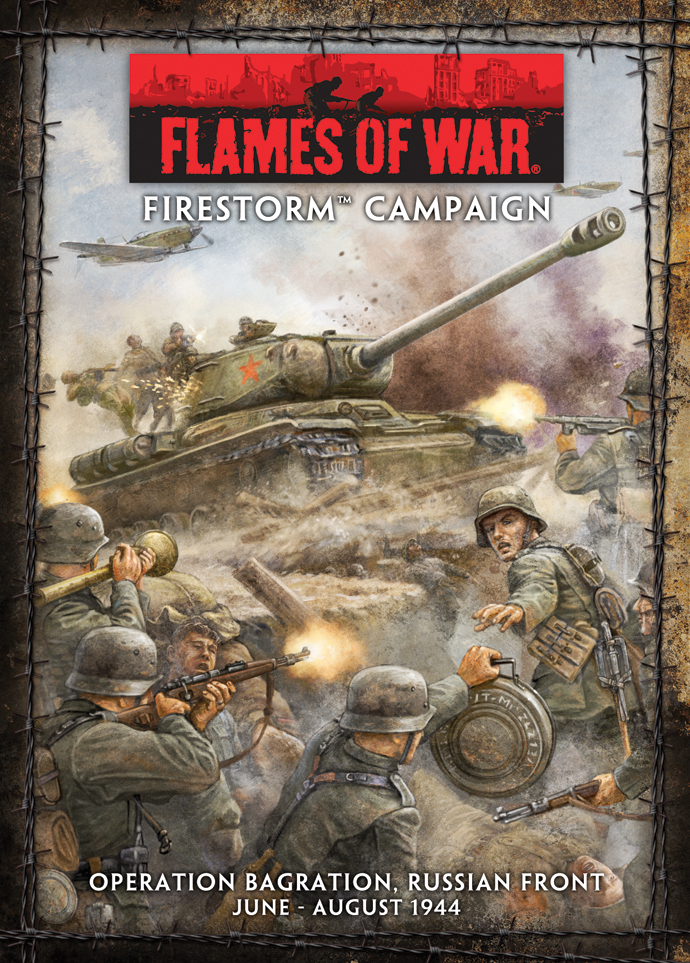 |
Introducing the Firestorm Campaign System
Wargaming has long been a passion of mine and as such I have tried numerous wargames and board games. Some have truly stood the test of time and remain favourites of mine years after they have disappeared from store shelves. When John-Paul and I first started discussing the idea of Battlefront producing a campaign system, I thought about the specific things that made those games so memorable to me.
The first thing that I wanted was for the campaign to retain that fast and furious feel that I like about playing a Flames Of War game. I also wanted to make sure that every action a player made should cause their opponent to think about ways to react and counter. The flow of initiative as such.
Next, I am a visual person and therefore appreciate the time and effort that goes into making things look and feel as good as possible. That’s why our design team spent so long working on the maps and tokens. Additionally, the idea of pushing real playing pieces around on a nicely presented game board gave me an image of a General managing their troops, just like the old war rooms that Generals spent their time in.
|
|
Last of all and perhaps most important, was that players needed to feel that there was an outcome or a result and that even in the last few games, careful planning (and not just random chance) could mean that the whole campaign could be won or lost. During our final play test with the Auckland team the whole fate of the campaign actually came down to one last game – would the Germans halt the Soviet advance and gain a tactical victory, or would the Soviet juggernaut overcome?
Firestorm – Bagration was one of the most complex projects Battlefront has ever undertaken. It grew from being a Campaign system by itself to include additional missions, scenarios, a couple of completely different ways of playing Flames Of War - Partsans & Polizei, and Total War. It was hard work for the entire team, but hopefully you will enjoy playing it as much as we have!
Happy gaming and welcome to the Firestorm in Byelorussia.
Peter S
|
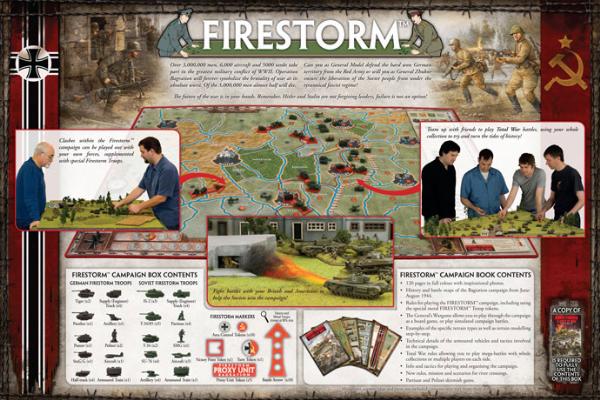 |
|
What is Firestorm—Bagration?
Firestorm—Bagration gives you the tools to recreate the 1944 Soviet offensive in Byelorussia. On 22 June, more than 2,000,000 Soviet soldiers stormed the heavily fortified lines of the badly outnumbered German Army Group Centre. The German defences quickly crumbled under several sledgehammer blows. German armoured reserves rushed forward, desperately counterattacking to stem the on-rushing Red tide in the climactic Battle of Minsk.
Firestorm—Bagration is Battlefront’s first map campaign using the Firestorm system. This campaign allows you to re-fight the battles of Operation Bagration on a grand scale in which you and your friends will be taking the part of the commanders that decided the course of history in those critical weeks of June and July 1944.
While the course and outcome of the real Operation Bagration can’t be changed, the outcome of your campaign is up to you. Either side can win. The Red Army could smash Army Group Centre opening the way to the offensives that ended the war, or the German Army could reverse history and stem the Soviet tide, buying time to rebuild and go on the offensive once more. The only guarantee is that the more games you play and win, the closer you will bring your side to victory.
No matter who wins, the campaign is a great opportunity to get in plenty of Flames Of War games, play new opponents, win glory for your army, and perhaps to meet new friends and rewrite history along the way.
|
 |
|
Why Play a Campaign?
The short answer is to play more games, and to have those games mean something in a bigger context. Rather than just adding to your tally of wins and losses, your victories could result in the encirclement of enemy forces, the capture of a vital city, or the cutting of the enemy supply lines. All of these things happen in the campaign and they all have a major effect on the games that follow. Every battle makes an immediate difference to the outcome of the whole campaign.
As a club or shop, the benefits of a campaign are similar. It’s a great reason to get together with your friends and play lots of games. It’s also a good excuse to have a workshop weekend beforehand and build up the club’s stock of terrain!
Operation Bagration
Firestorm—Bagration uses a map to plot the strategic situation and show the effects of your tabletop games on the battles for Byelorussia. All of the important units, cities, terrain, and objectives of the operation are represented on the map.
The factors that shaped the historical battle will shape your campaign too. The rail lines that supplied each side and the fortress cities that dominated these railway lines are the key to victory.
|
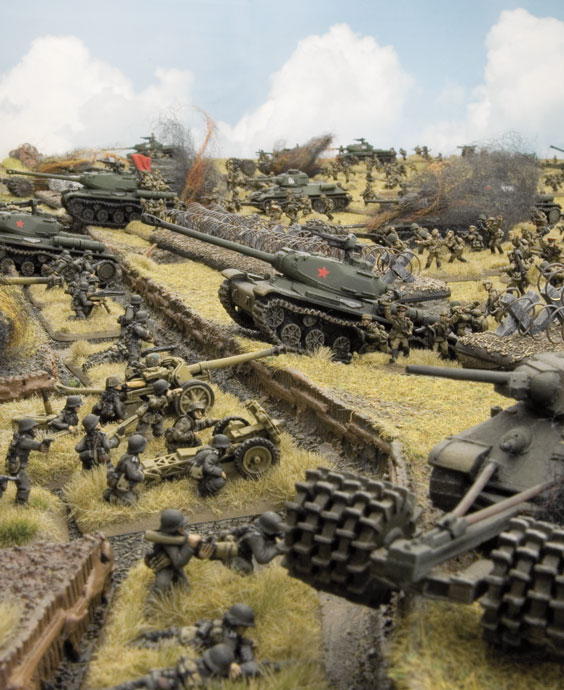 |
| The rivers that formed the successive German defensive lines decide where the battles will be fought. The Soviet partisans that virtually controlled the forests and marshes of Byelorussia hinder German efforts to move reinforcements to the front line. |
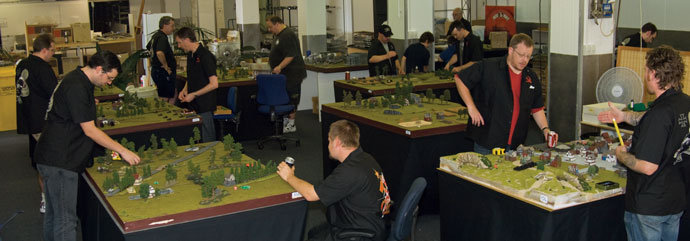 |
|
Campaign Scenarios
There are two different campaign variants that you can try. The main campaign starts on 26 June, once the Soviets have broken through the fortifications and virtually surrounded the fortified cities. This scenario concentrates on the mobile battles on the road to Minsk and is a great place to start playing Firestorm—Bagration.
The extended campaign runs right from the start of Operation Bagration on 22 June 1944. In this scenario the Soviet offensive crashes into the Germans fortifications, seeking to break through and capture the fortified cities in their path.
How does it Work?
The campaign runs for four or six turns depending on the scenario you choose. Each turn the general in charge of each side redeploys and reinforces their army setting up the strategic situation for the turn. Then the battlefield commanders take over, fighting battles to capture ground, take cities, and destroy enemy forces. Every battle fought changes the situation as troops advance and fall back, as troops are pushed back, captured or destroyed.
The four to six-turn limit on the campaign makes it a realistic commitment for both the organiser and the players. Many campaigns drag on, and eventually the players lose interest. This won’t happen in Firestorm—Bagration as the campaign will end with a decisive outcome within four to six weeks (depending on the scenario and how many gaming days you can play a week), or even a single weekend for a tournament-style campaign. |
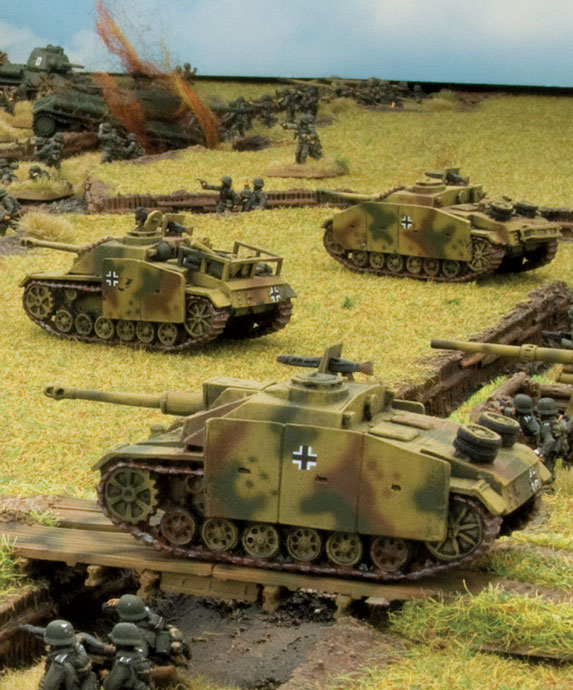 |
Flexibility
Within this campaign flexibility is king. Players use their normal Flames Of War forces to fight battles to capture areas, reinforced by the main combat units shown on the campaign map. Each game the player makes a new force to respond to the situation they face, allowing them to recover from previous defeats and fight on.
While players may lose the support of main combat units destroyed in previous battles, they always get their core force. This has the advantage of keeping the campaign fun right to the end. It is simply not possible for one side to become much stronger than the other, so every battle is winnable and every fight counts.
This flexibility applies to players as well as their forces. While fielding a Soviet or German force is nice from a historical viewpoint, it doesn’t matter if you don’t have one, you can fight with any force you have. Nor is the size of your force an issue. You can play big or small battles or anything in between. You can even swap sides if you want to (although turning traitor can mark you as a target for your former comrades!). All that matters is that you are playing games, contributing to the campaign’s outcome, and having fun.
|
Last Updated On Thursday, November 13, 2008
|
|
|